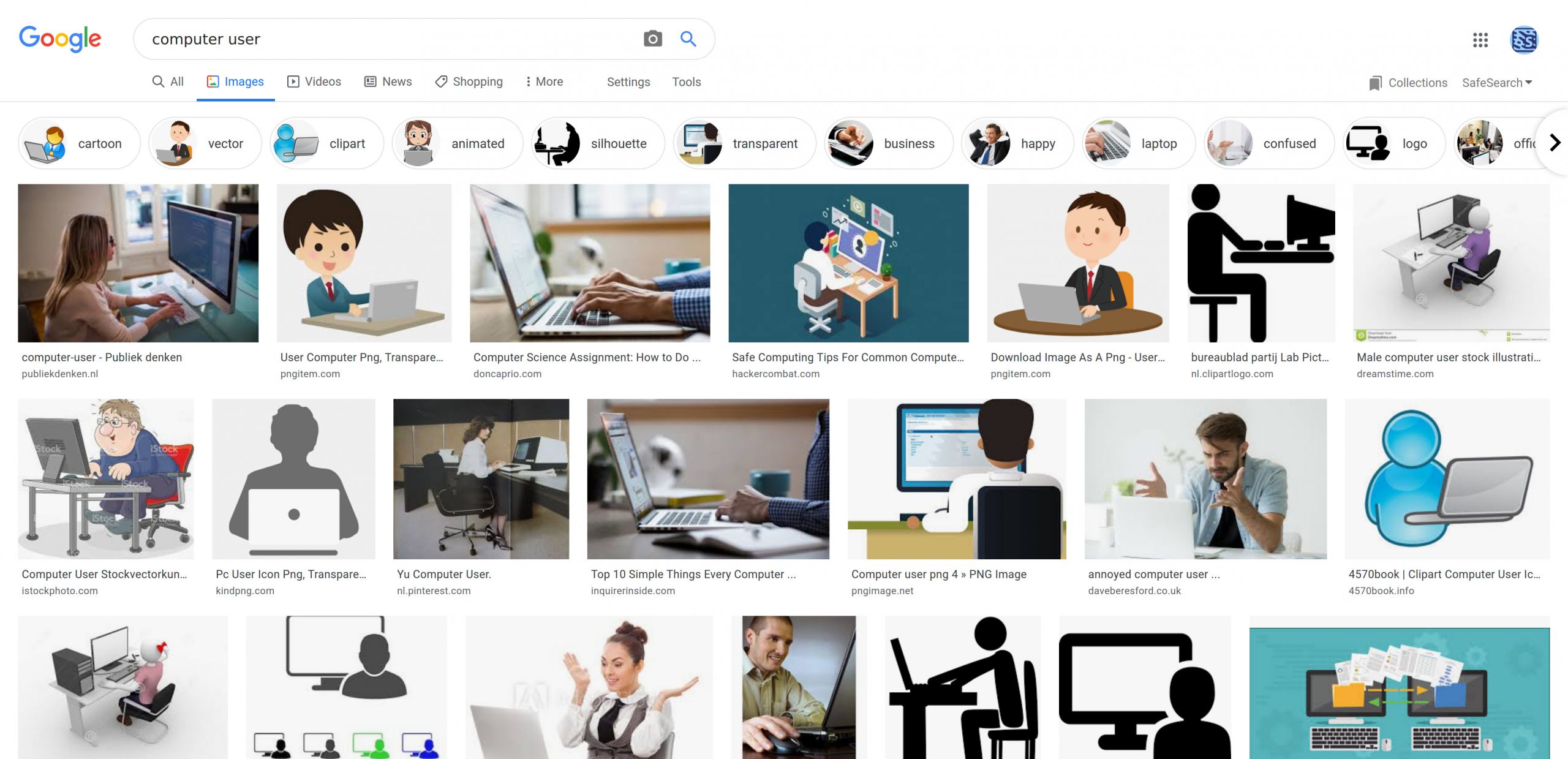Nowadays, computers can be found inside cars, fridges and watches. So, what do we envision when we think of a computer user? Google Images will provide you mostly with images of people sitting in front of a laptop or desktop computer, somehow confirming the concern that the computer, in the very moment when it becomes truly pervasive, disappears not only from sight, but also from the imagination. Here, I want to briefly argue why the most productive conception of a computer user today is that of a smartphone user.

“Computer user” search on Google Images.
The first reason is quite banal. Nowadays, people spend most of their computer time in front of a smartphone rather than in front of a PC. In the US, for instance, desktop/laptop time was more or less equal to mobile time in 2013 (~136 minutes). In 2019, the former has slightly decreased while the latter has increased quite a lot (~203 minutes), which also means that people spend more of their time on a computer. In emerging countries, smartphone usage is replacing PC usage, as shown by Robert McGovern. As he puts it, “there’s no doubt that mobile is eating the web”. Furthermore, in the US, a person is more likely to possess a mobile phone than a desktop computer (81% vs 74% in the US according to the Pew Center). I suspect that globally the discrepancy is higher.
Finally, I believe is becoming more and more common that one’s first encounter with a computer is with a mobile phone rather than with a PC. I see this happening on both sides of the age spectrum: the elderly learning to use a smartphone for the first time and that of kids doing their first experience with a mobile or a tablet at a very early age.
In 2013, Michael J. Saylor pointed out that “currently people ask, ‘Why do i need a tablet computer or an app-phone [that’s how he calls a smartphone] to access the Internet if I already own a much more powerful laptop computer?’. Before long the question will be, “Why do I need a laptop computer if I have a mobile computer that I use in every aspects of my daily life?’” If we are to believe the CNBC, we must admit he was right. Their recent title was “Nearly three quarters of the world will use just their smartphones to access the internet by 2025”.
If we take all of this into consideration, having in mind mobile phones rather than PCs when we talk of computer users seems both more adherent to the times and more inclusive.
But there is something else I’d like to mention, that is, the influence of smartphones usage on the interface design of PCs. The most obvious case in point is web design. When it becomes clear that sites are mostly accessed via smartphone, more effort will be put in apps and mobile designs. A blatant example of this is Instagram, which desktop version is very limited, not to say crappy.
The “mobile first” rule has been a mantra of web design since 2010. Mobile first means beginning the design process from the most limited and low-function browser and then gradually add visual complexity, effects and interactivity. This approach is called “progressive advancement”. More often than not, there is not enough time to give the same amount of care to every device, so the device that comes first will influence the design on the others as well. I suspect that the frequent layouts with big fonts and a single column are a result of the “mobile first” mindset.
But I’d like to suggest that the “mobile first” influence goes beyond web design. As soon as mobile phone use becomes more frequent than PC use, or it becomes the environment where one learns how to interact with a computer, certain patterns of behavior specific to the former start shaping the latter. For now, I can only bring an empirical observation to the table. I noticed that most students I work with often have a single full-screen window on their screen. They don’t seem to take much advantage of the complex spatiality afforded by their high resolution laptop screen. This might have to do with Mac OS, which encourages full screen mode via the green button on every window. This feature felt very weird to me when was introduced. In fact, I still alt + click to expand the window, as I don’t understand what I gain by hiding the topbar and the toolbar.
